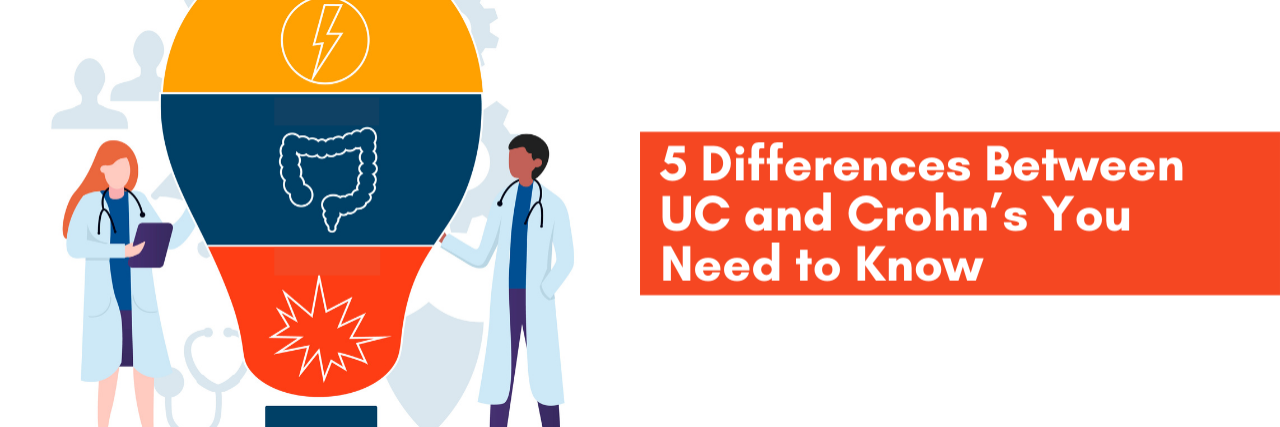Over 3 million adults in the United States have been diagnosed with inflammatory bowel disease (IBD). People often know that those living with bowel disorders can all experience some level of discomfort or irregularities around using the bathroom that impact their daily lives. However, not everyone is aware that IBS and IBD are not the same condition and can affect the lives and bodies of those who live with them in very different ways.
When it comes to talking about IBD, it’s important to know that irritable bowel syndrome (IBS) and IBD are not the same thing. IBS is a more common condition, affecting at least 10 times as many people living in the US. IBS is a problem with how the muscles controlling your bowels work and involves symptoms like constipation, diarrhea and bloating. It does not involve inflammation in the tissue of your bowels or your immune system like IBD. IBD can also involve bleeding, elevated white blood cell count and fever, whereas IBS does not.
It is also important to know that there are two types of IBD: Crohn’s disease and Ulcerative Colitis (UC). People who live with either Crohn’s disease or UC can experience significant impacts to their daily lives due to persistent diarrhea, abdominal pain, weight loss and fatigue. And while Crohn’s disease and UC are both chronic diseases characterized by intestinal inflammation, there are some important differences in how these two types of IBD can affect the bodies and lives of those who live with them:
- Both diseases can involve inflammation of the large intestine, but in Crohn’s disease the inflammation extends deeper into the tissues of your intestines.
- Crohn’s disease can affect any part of the gastrointestinal tract, which is the technical term for the path that food takes in your body that extends from the mouth to the anus. UC only affects tissues in the large intestine and/or rectum.
- In Crohn’s disease, isolated areas of inflamed and damaged tissue can occur right next to areas of healthy tissue. In IBD, the areas of damaged tissue are usually continuous and not mixed with pockets of healthy tissue.
- The symptoms and impacts of UC on your body are usually limited to the digestive tract. This is not the case with Crohn’s which can affect the eyes, joints, skin, and liver.
- In UC, about 30 percent of people in remission will experience worsening of their symptoms within the next 12 months. In Crohn’s disease, a much higher number of people will have a recurrence of their symptoms: 67 percent.
Mighty staff member Angelica lives with UC. However, getting to that diagnosis wasn’t an easy journey for her. Here’s what she had to say about it:
“In the past 25 years of having UC, various gastroenterologists have questioned if I actually have Crohn’s instead. When I was flaring and would need to try a new form of treatment, I’d have many kinds of tests to confirm the inflammation was solely in my large intestine. Many people I know with Crohn’s have told me their original diagnosis was UC. At times I used to get anxious that I wasn’t 100 percent certain which it was, but talking to my GI doctor about the different scenarios helped put my worries at bay.”
If you’re trying to navigate an IBD diagnosis, a good relationship with your gastroenterologist is key. Make sure to speak with your doctor about any concerns you may have about receiving a UC or Crohn’s diagnosis: they are here to help navigate between the two major types of IBD.

